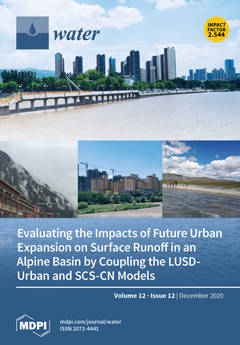This study aims to validate the stable carbon isotopic composition (
δ13C) of phytoplankton as a tool for detecting submarine leakages of anthropogenic CO
2(g), since it is characterised by
δ13C values significantly lower than the natural CO
[...] Read more.
This study aims to validate the stable carbon isotopic composition (
δ13C) of phytoplankton as a tool for detecting submarine leakages of anthropogenic CO
2(g), since it is characterised by
δ13C values significantly lower than the natural CO
2 dissolved in oceans. Three culture experiments were carried out to investigate the changes in
δ13C of the diatom
Thalassiosira rotula during growth in an artificially modified medium (ASW). Three different dissolved inorganic carbon (DIC) concentrations were tested to verify if carbon availability affects phytoplankton
δ13C. Simultaneously, at each experiment,
T. rotula was cultured under natural DIC isotopic composition (
δ13C
DIC) and carbonate system conditions. The available DIC pool for diatoms grown in ASW was characterised by
δ13C
DIC values (−44.2 ± 0.9‰) significantly lower than the typical marine range. Through photosynthetic DIC uptake, microalgae
δ13C rapidly changed, reaching significantly low values (until −43.4‰). Moreover, the different DIC concentrations did not affect the diatom
δ13C, exhibiting the same trend in
δ13C values in the three ASW experiments. The experiments prove that phytoplankton isotopic composition quickly responds to changes in the
δ13C of the medium, making this approach a promising and low-impact tool for detecting CO
2(g) submarine leakages from CO
2(g) deposits.
Full article





